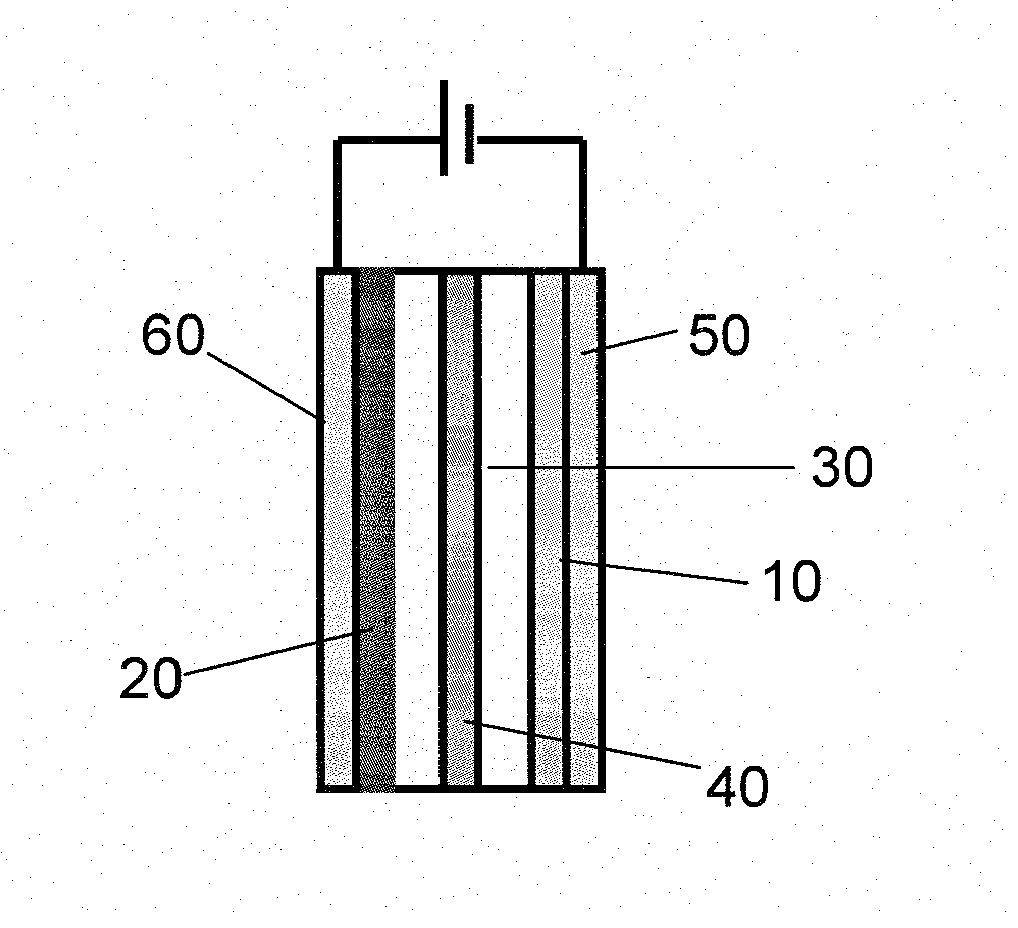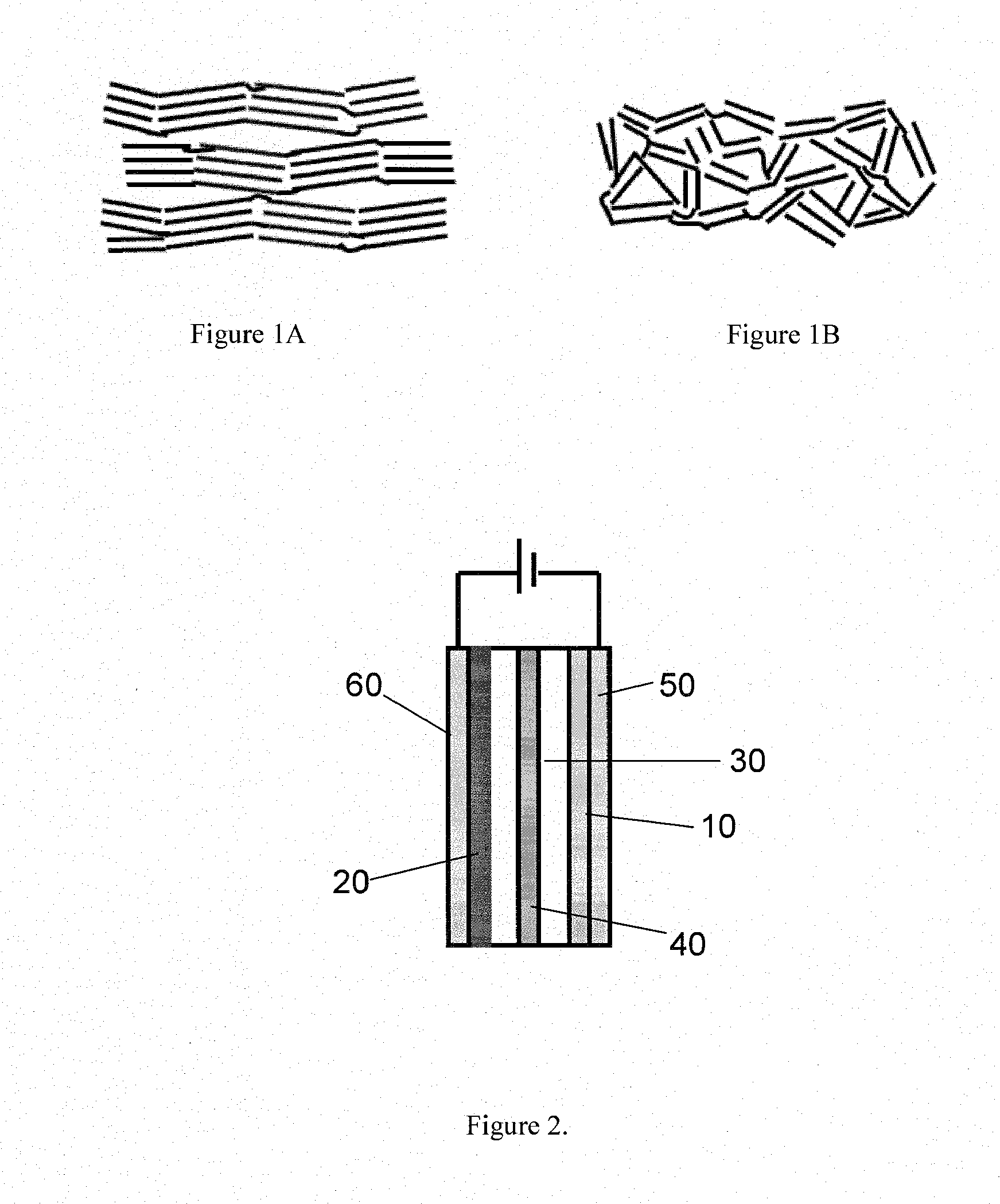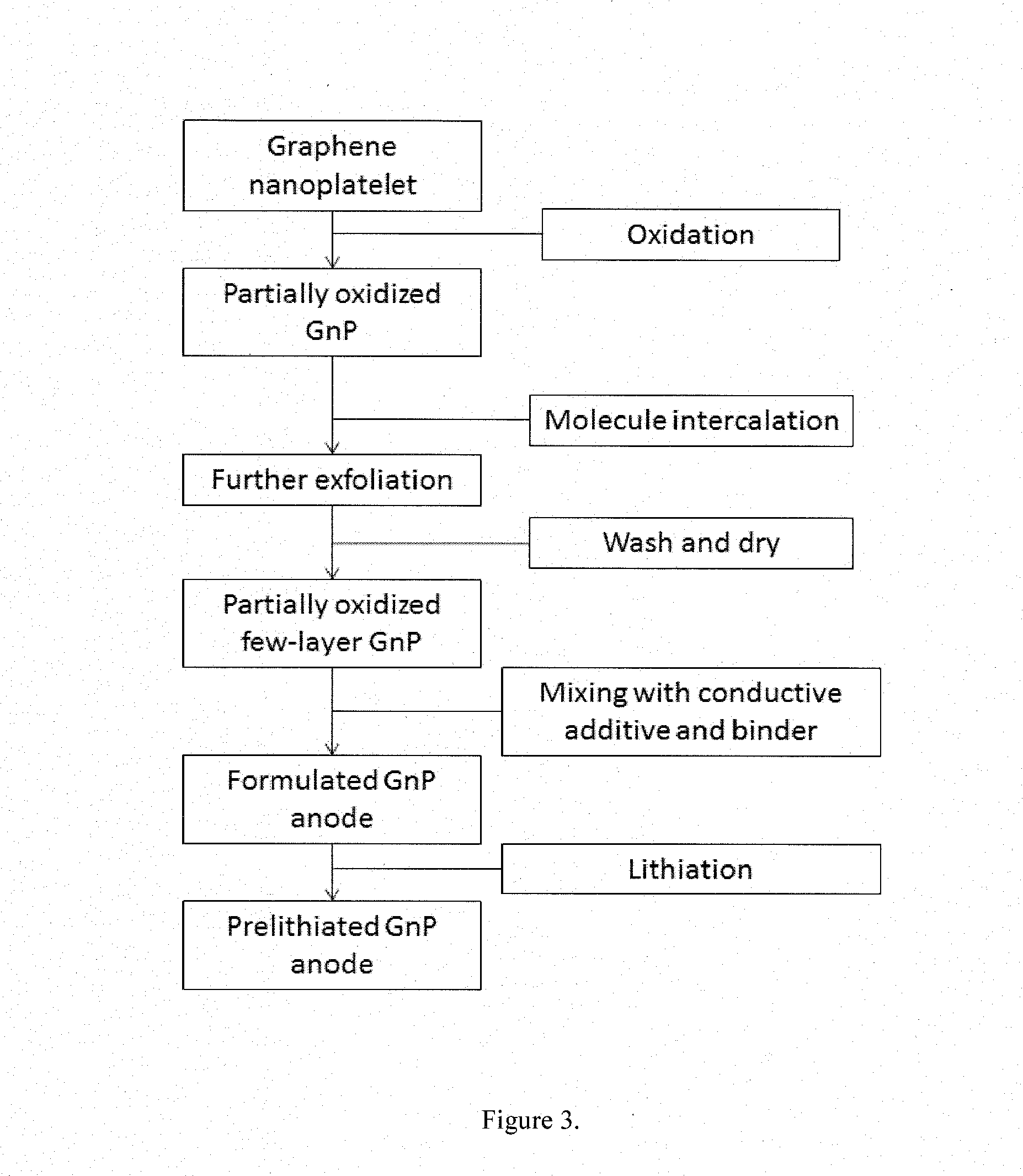Method for manufacturing graphene-incorporated rechargeable li-ion battery
a rechargeable li-ion battery and graphene-incorporated technology, applied in the field of lithium batteries, can solve the problems of prone to pulverization or fragmentation, high lithiation particle or film brittleness, etc., and achieve unprecedented combinations of energy and power output, eliminate li ion consumption, and enhance specific capacity and rate capability
- Summary
- Abstract
- Description
- Claims
- Application Information
AI Technical Summary
Benefits of technology
Problems solved by technology
Method used
Image
Examples
example
[0030]To prepare partially oxidized GnP (ox-GnP), referring to FIG. 3, commercial GnP nanoplatelets are immersed in an acid, e.g concentrated nitric acid or nitric acid and sulfuric acid mixture. An oxidant e.g. potassium chlorate or potassium bichromate are added into mixture under vigorous stirring. The reacted GnP is washed thoroughly and partially oxidized GnP intercalated with acid was obtained upon drying. The ox-GnP is then re-intercalated with tetrabutylammonium hydroxide (TBA) or oleyl amine solution in dimethylformamide (DMF) via stirring or solvothermal reaction at elevated temperature. After cooling down, the exfoliated ox-GnP is washed and re-dispersed in DMF or N-methyl-2-pyrrolidone (NMP). charge / discharge tests were done using a CR2032-type coin cell. Metallic lithium is used as the counter electrode. The working electrode is fabricated by first pasting a mixture of graphite or GnP flakes, carbon black and PVDF with a weight ratio of 82:8:10 onto supper foil. The typ...
PUM
| Property | Measurement | Unit |
|---|---|---|
| charge/discharge efficiency | aaaaa | aaaaa |
| coulombic efficiency | aaaaa | aaaaa |
| thick | aaaaa | aaaaa |
Abstract
Description
Claims
Application Information
 Login to View More
Login to View More - R&D
- Intellectual Property
- Life Sciences
- Materials
- Tech Scout
- Unparalleled Data Quality
- Higher Quality Content
- 60% Fewer Hallucinations
Browse by: Latest US Patents, China's latest patents, Technical Efficacy Thesaurus, Application Domain, Technology Topic, Popular Technical Reports.
© 2025 PatSnap. All rights reserved.Legal|Privacy policy|Modern Slavery Act Transparency Statement|Sitemap|About US| Contact US: help@patsnap.com



